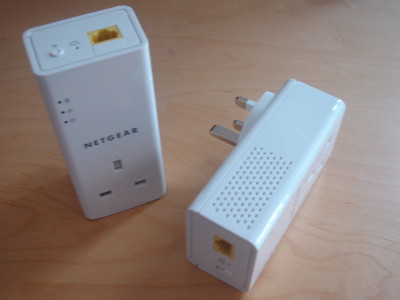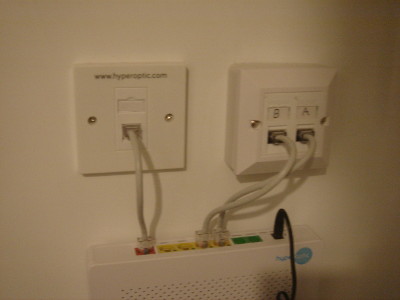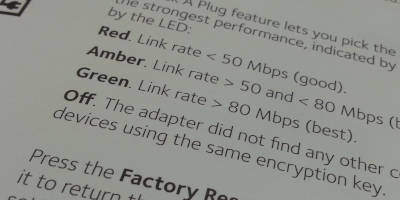Netgear Ethernet-over-mains
05 November 2021Earlier this week I ordered in a pair of Netgear
PLP1000 Gigabit Homeplug mains powerline adapters, which uses household mains cabling to carry network signals.
While from the start I doubted that they would actually manage to transfer at the full rated gigabit speed but at £45 for the pair I decided to give them a try anyway to see how close they would come to this advertised speed in practice.
Overall they were disappointing.

Background
I had suspicions about the quality of the UTP cabling in my new flat and testing with an Ethernet cable tester indicated that one of the eight wires was broken, and since a speed-test came back with a capacity of only around 90 mega-bits it looked like I might be stuck with just fast-ethernet speeds rather than the full giga-bit. This is because 100 mega-bit only uses two pairs within twisted-pair cabling whereas giga-bit needs all four. Later it turned out that the tester itself had a flakey internal connection which was not helped by also having an almost-flat power battery, but by that point I had already decided to give some Ethernet-over-mains adapters a try.

The apartment is brand-spanking-new and while I do not know where the ring-main is routed so cannot comment on actual propagation distances, I can safely say that the wiring conditions are about as favourable as can be reasonably expected in the real world — all new cabling with the latest up-to-code equipment, rather than the rats' nest of patch-work that affects old houses. Having a peek at the electrical wiring the workmanship the decorators did around the outlets is a little shoddy but the electrical wiring itself all looks good.
The results
Testing was done using what is due to be my new fileserver and my now rather-dated laptop, and I started out with a basic ping test. The latency was circa 4ms which for the distance involved is lousy — ethernet over that distance would typically be circa 200μs but to be fair the devices are having to do encryption/decryption and is still a lot better than what 802.11 gives. The bandwidth itself had some variability being within the range 202–220 megabits with an average of 210 megabits, which for comparison is significantly more than the circa 80 megabits my 802.11 connection from the same table gets. A straight ethernet connection gave 980 megabits.

The part of the instruction manual regarding the on-device indicator LEDs states that anything above 80 mega-bits is regarded as “best” which straight off the bat was not a good omen, so I decided to see what difference closer sockets made to the performance figures. While I managed to get a peak of 250 megabits the average was still in the 210 megabit ballpark.